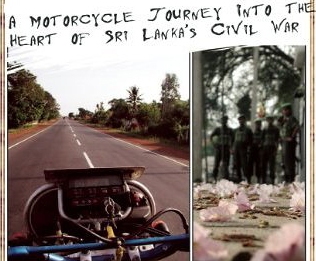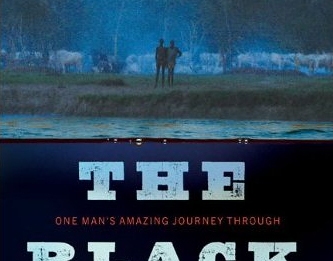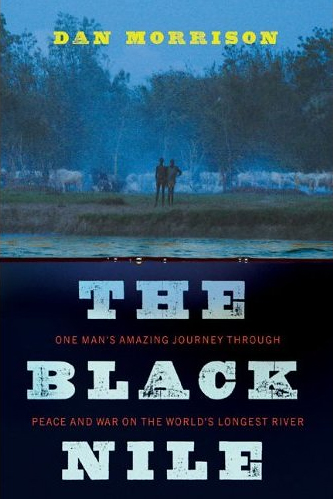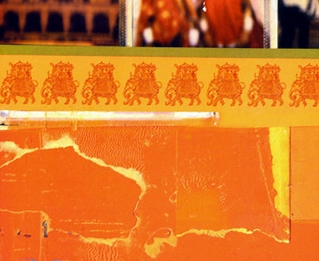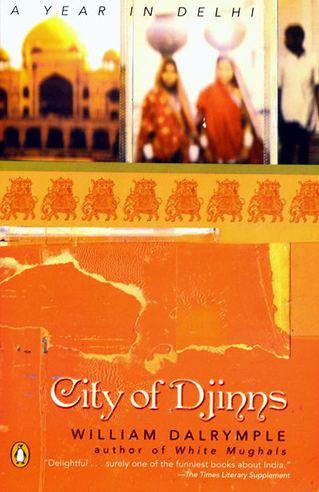Tea Time with Terrorists: A Motorcycle Journey Into The Heart Of Sri Lanka’s Civil War
by: Mark Stephen Meadows
Here is a subject and country you don’t often see written about or traveled around. Sri Lanka, formerly called Ceylon, definitely has a good reason for such a lack of written experience, having been in the midst of a decades long civil war and considered one of the poorest nations in the world, as well as being known as the home of modern terrorism. Mark takes full advantage of this “blank palette” of the world and creates an informative, insightful, sometimes surprising, often quite dangerous, fascinating and humorous look at this island nation that so many know so little about, let alone even knowing where it is located on the map.
In Mark’s own words, he “sets out to find and report the most subjective and inaccurate news I can”, having the thought that stories we have to tell are more true, less accurate, as compared to stories you see on the news, which are more accurate, less true.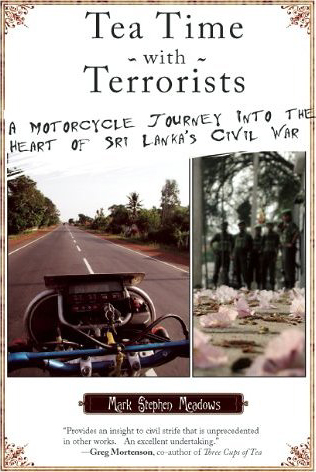
Mark starts his journey in the south and works his way north to Jaffna. Along the way he starts to understand this “Galapagos of Terrorism”. He puts a face to some of the most wanted terrorists in the world, literally also, with pictures throughout, and sets out to show what real terrorists are like. I gotta give him credit, he interviews some real heavy hitters here, and really gets into the political side and true nature and thinking of some of the oldest and most experienced terrorists in the world. These are the guys who invented the singular suicide bombing, The Tamil Tigers. Not just one organization is here though, you also have: EROS, ELO, ENDLP,ENLF, EPRLF, EPDP, LTTE, PLA, JVP, SLFP, TLO, TSL, TELF …to name just a few. Group upon group formed to exact revenge on the former only to lead to the formation of the next who wants revenge on the latter. Mark explains their weapons, their methodology and their thinking as he makes his way north. In-between he tells the tale of his journey, of elephants, of temples, of the people in the middle.
The book starts out brilliantly, and then heads into the interviews, which admittedly almost loses me, especially after my last book (see review before this one), but Mark brings it back to memoir just in time and ends the book even more brilliantly than he started it. In between this brilliance he teaches the reader quite a bit about terrorists, and shows some of the softer sides of these people, as well some of the darker sides of such a long war. I think the thing that impressed me the most was how he brought everything together at the end. From the story of how to catch an elephant to the story of men training in Palestine, he brings everything together and provides reason for each and every little story he tells. At times, I think he loses his focus throughout, only to actually see that he brings whole picture together at the end. Very impressive. I really didn’t see it coming but give him all the more credit for it.
The book turns into quite a good memoir and gives quite a lesson on the history of Sri Lanka, as well as an insight into why that history has been so unstable. Honestly, it’s the best piece of literature I have read on Sri Lanka, by far. The only caveat being that there really isn’t much out there, which almost lends more respect to Mark for traveling through such a country where very few outsiders dare to go, with good reason. Mark also has, and points out, some very insightful views of the world and its thinking on terrorism, and provides a very open minded perspective on the worlds dealing with these issues today, which at times are most often helping, not hurting these organizations.
Bottom Line:
…if you’re at all interested in Sri Lanka: Highly Recommended
…if you’re interested in, well, what the hell these terrorists are thinking, or terrorism in general: the Highest Recommendation I can possibly give
…if you’re looking for a good, original, travel memoir type read but not really particular to Sri Lanka: Recommended but with reservations – the interviews
It’s a great book and very well written, no doubt. Tea Time with Terrorists is not a lovey dovey kind of read, as one would imagine. It is, for the most part, what the title says, with a look into the country, the countryside, the history, the customs and its people throughout. Although I mention politics and history throughout this review, it’s definitely not a political or historical type book, but more memoir and personal experience type read. Even if you’re not interested in what a terrorist thinks, as I’m certainly not, it still is very interesting. It’s a good, at many times great, book, and if nothing else, very original.
Help me keep traveling, reviewing, and taking pictures. If you want to buy this book, or any other book through Amazon, than click and buy through the photo above. Thank you!!! John
